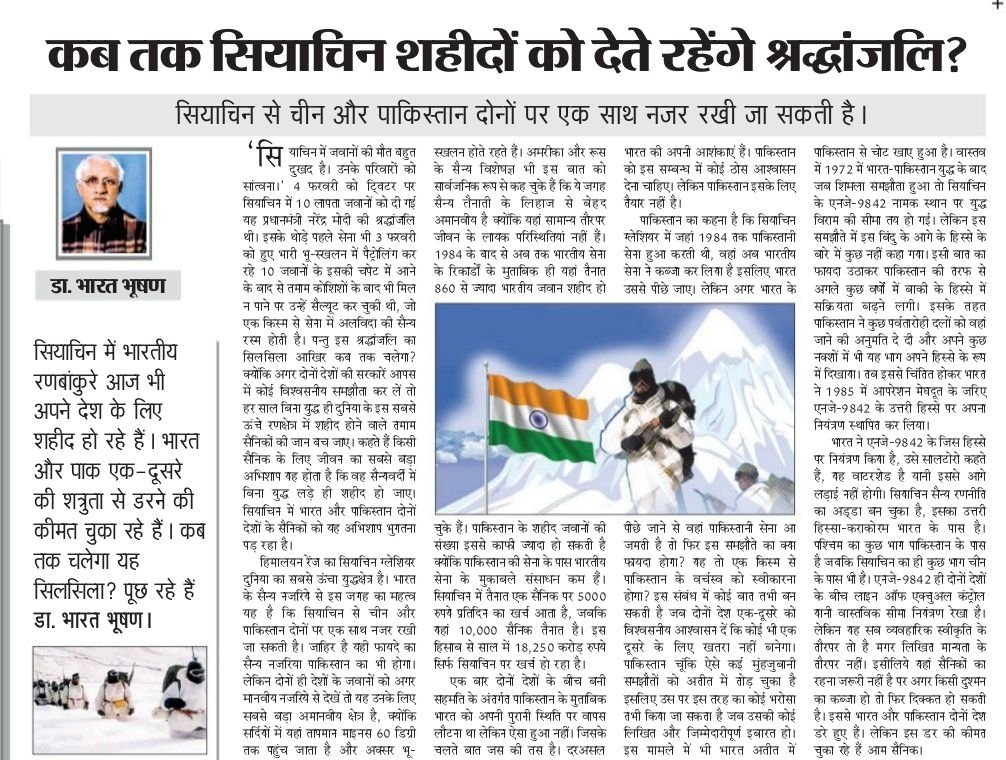NEW DELHI: Lachhman Dass was barely 22 when he faced formidable military challenges on the planet’s most unforgiving battlefield as a member of a hand-picked assault team assigned to capture the highest post on the Siachen glacier in June 1987.
Subedar Major and Honorary Captain Lachhman DassThe team’s last serving soldier that carried out the dangerous mission against an enemy firmly ensconced in those heights will hang up his boots in April, bringing down the curtains on a magnificent chapter in India’s military history.
The death of 10 soldiers killed in an avalanche at Siachen’s 19,600-ft Sonam post last week has turned the spotlight back on the glacier and the hardships faced by the men defending it, aware of death lurking at every step. “There’s no guarantee you will come back alive. Soldiers have to endure an endless cycle of extreme conditions. But the job has to be done and we will do it no matter what the cost,” says Subedar Major and Honorary Captain Dass, who was awarded a Vir Chakra for capturing Pakistan’s Quaid post.
Dass is from 8 Jammu and Kashmir Light Infantry, a battalion designated as Bravest of the Brave for winning two highest gallantry awards. He gets goosebumps when he strings together the events that led to the capture of the Pakistani post perched at a height of 21,153 feet, a vantage position in the western Himalayas from where Indian military activity could be easily monitored.
Several attempts to take the post had failed, the battalion suffered casualties, guns were fro z en and soldiers deployed along icy peaks were frostbitten. “It was a scene from hell. We were fighting for our own survival and the enemy was holding high ground,” says Dass, part of one of the four teams formed to mount the final assault on June 24. The next 72 hours saw the battalion’s finest fighting men, including the legendary Bana Singh who was awarded the Param Vir Chakra, stretched to their limit.
Bana Singh, after whom the Quaid post was renamed, and Dass were in the same team. They used a rope to climb an ice wall standing more than 1,200 feet to get near the enemy. “There was only one approach to get closer to the post. Even a handful of soldiers at those dominating heights can hold out against an attack by 100 soldiers. We knew we had to produce a miracle,” he says.
Sonam and Amar posts were providing them cover fire but the soldiers went without food and sleep for three days before they crept up on the enemy bunker and lobbed grenades, killing almost eight Pakistani soldiers.
In 1987, soldiers deployed on the glacier received an avalanche allowance of a mere ` 100 a month.
The Seventh Pay Commission report has raised their hardship allowance from ` 14,000 to ` 21,000 and for officers from ` 21,000 to ` 31,500. However, bureaucrats will receive ` 55,000 to ` 75,000 a month as tough area allowance for serving in places like Leh and Guwahati, an anomaly that the three service chiefs have taken up with the government.
Parrikar regrets snow deaths
Visakhapatnam: Terming the death of 10 soldiers in an avalanche on the Siachen glacier “painful”, Defence Minister Manohar Parrikar on Sunday said the decision to deploy troops in the world’s highest battlefield was based on security needs, despite the hostile conditions there.”Decision about (deployment of troops in) Siachen is based on the security of the nation. If somebody wants to go there and they have to understand its importance, why we are maintaining it (security presence) in spite of hostile conditions…I think you will understand if you go to that place,” he told reporters on the sidelines of an international maritime conference here. PTI


